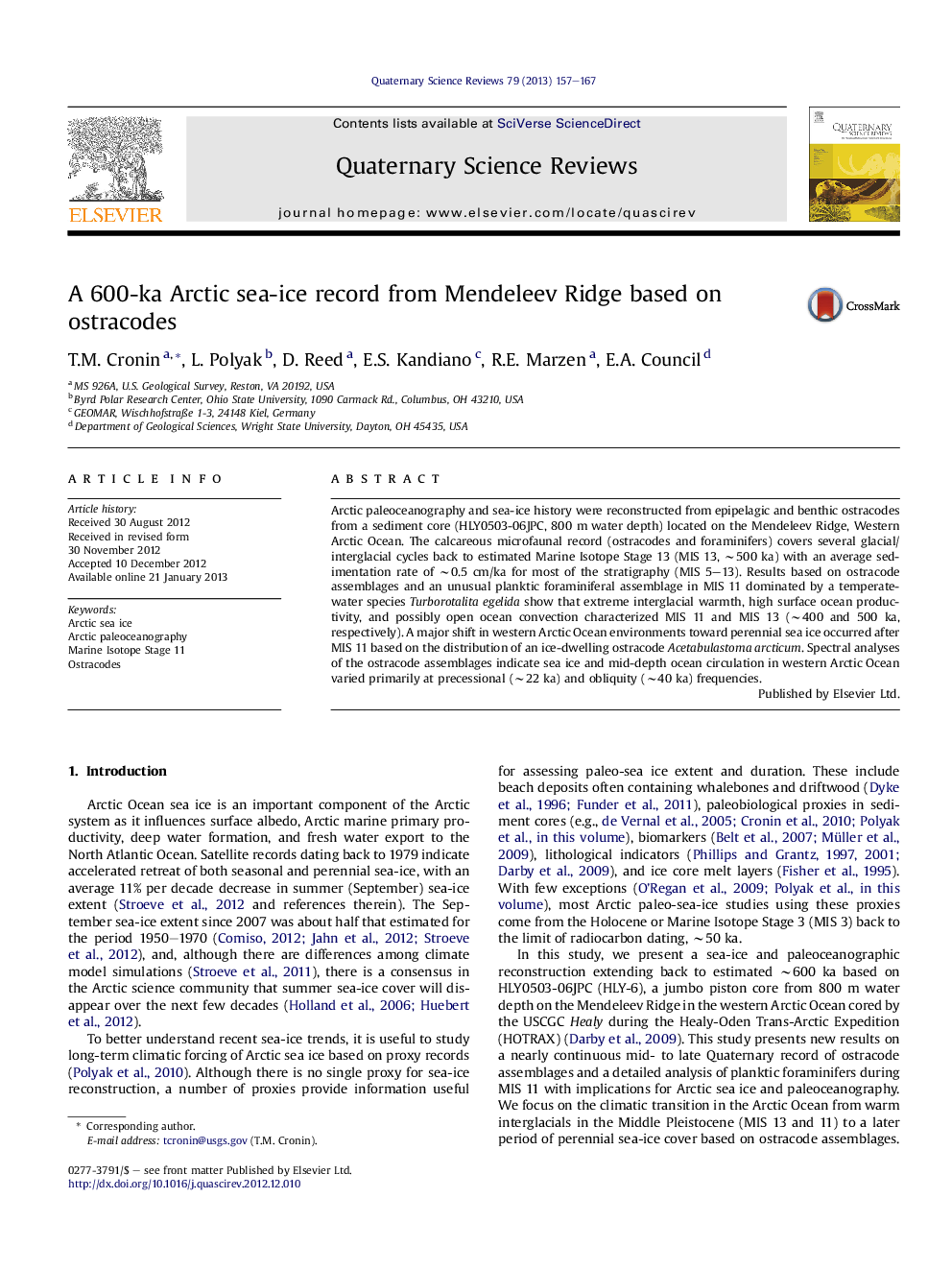| Article ID | Journal | Published Year | Pages | File Type |
|---|---|---|---|---|
| 4735495 | Quaternary Science Reviews | 2013 | 11 Pages |
Arctic paleoceanography and sea-ice history were reconstructed from epipelagic and benthic ostracodes from a sediment core (HLY0503-06JPC, 800 m water depth) located on the Mendeleev Ridge, Western Arctic Ocean. The calcareous microfaunal record (ostracodes and foraminifers) covers several glacial/interglacial cycles back to estimated Marine Isotope Stage 13 (MIS 13, ∼500 ka) with an average sedimentation rate of ∼0.5 cm/ka for most of the stratigraphy (MIS 5–13). Results based on ostracode assemblages and an unusual planktic foraminiferal assemblage in MIS 11 dominated by a temperate-water species Turborotalita egelida show that extreme interglacial warmth, high surface ocean productivity, and possibly open ocean convection characterized MIS 11 and MIS 13 (∼400 and 500 ka, respectively). A major shift in western Arctic Ocean environments toward perennial sea ice occurred after MIS 11 based on the distribution of an ice-dwelling ostracode Acetabulastoma arcticum. Spectral analyses of the ostracode assemblages indicate sea ice and mid-depth ocean circulation in western Arctic Ocean varied primarily at precessional (∼22 ka) and obliquity (∼40 ka) frequencies.
